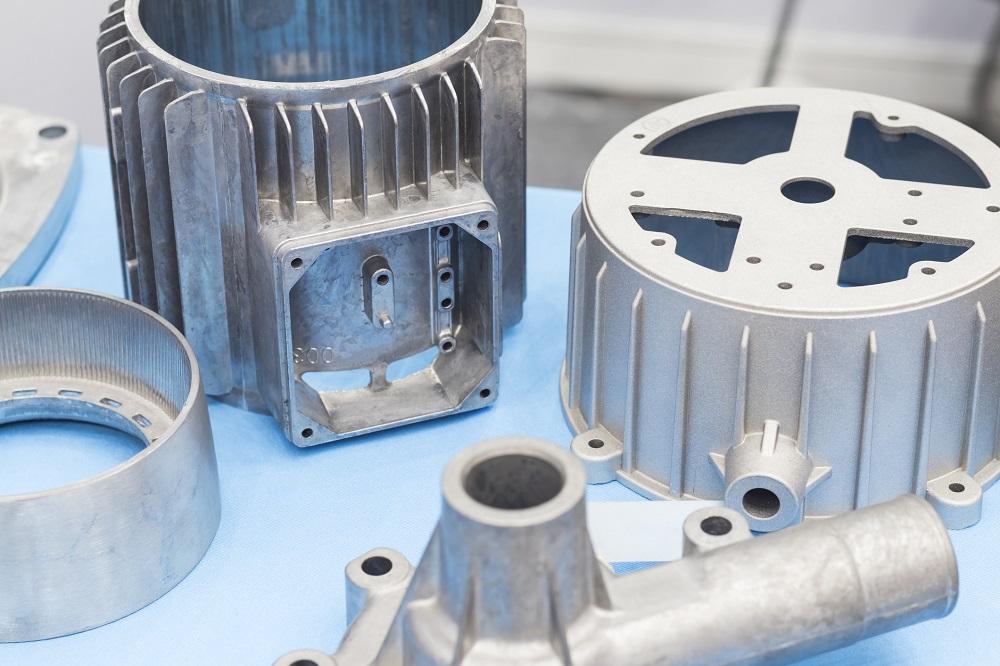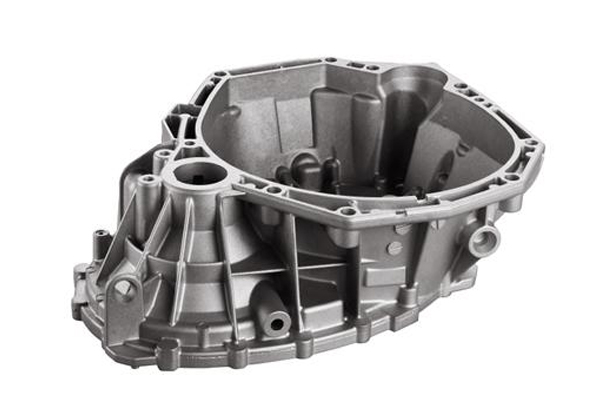Creative possibilities with Aluminum Casting for innovative designs
Everything You Required to Know Concerning the Uses and Advantages of Aluminum Castings
Aluminum castings play a crucial duty throughout different sectors, offering one-of-a-kind residential properties that enhance item efficiency. Their lightweight nature and strength make them ideal for applications in automobile and aerospace industries. Additionally, the adaptability of casting approaches permits intricate designs and tight tolerances. As the need for lasting services rises, recognizing the advantages and applications of aluminum castings comes to be progressively essential. What specific benefits do they provide over other products?
Summary of Aluminum Casting Processes
Aluminum casting procedures include a selection of strategies used to form liquified aluminum into desired types. These techniques consist of sand casting, pass away casting, and financial investment casting, each offering distinctive advantages relying on the application (Aluminum Casting). Sand casting involves producing a mold and mildew from sand, enabling detailed layouts and large elements, while die spreading uses high stress to inject liquified aluminum into metal mold and mildews, making sure precision and smooth surfaces. Financial investment casting, likewise referred to as lost-wax spreading, generates complex shapes with excellent dimensional precision, making it ideal for comprehensive parts
These procedures are defined by their capacity to produce lightweight, long lasting parts that exhibit outstanding rust resistance. The convenience of aluminum enables customization in numerous markets, from automobile to aerospace. Additionally, the capability to reuse aluminum boosts the sustainability of these casting processes, minimizing ecological influence while keeping material integrity. Comprehending these methods is important for maximizing manufacturing performance and achieving top quality aluminum castings.
Key Applications of Aluminum Castings
Aluminum castings play a crucial duty throughout numerous industries, particularly in vehicle, aerospace, and consumer electronics. In the automobile field, they add to light-weight frameworks that boost gas efficiency. Aerospace parts profit from aluminum's strength-to-weight ratio, while consumer electronics leverage its convenience for effective production.
Automotive Sector Applications
As the automotive sector proceeds to advance, suppliers progressively count on aluminum castings for their lightweight yet resilient buildings. These castings play an essential function in enhancing vehicle efficiency, fuel efficiency, and overall safety. Trick applications consist of engine blocks, transmission housings, and structural parts, which take advantage of aluminum's excellent strength-to-weight proportion. In addition, aluminum castings facilitate intricate geometries, enabling innovative styles that improve the rules of aerodynamics and decrease drag. The deterioration resistance of aluminum additionally contributes to longevity, reducing maintenance prices for both manufacturers and consumers. As electric lorries gain popularity, aluminum castings are important for battery rooms and other parts, even more strengthening their relevance in the future of auto manufacturing.
Aerospace Element Production
In the aerospace market, aluminum castings are essential to the production of light-weight, high-performance elements. These castings are essential for making parts such as engine housings, architectural frames, and touchdown equipment components, where weight decrease is important for gas efficiency and general performance. The exceptional strength-to-weight proportion of aluminum permits the advancement of intricate geometries that enhance the rules of aerodynamics. In addition, aluminum's resistance to corrosion contributes to the long life and reliability of aerospace parts, making certain safety in flight procedures. The casting process likewise permits for precise tolerances, which is vital in meeting stringent aerospace market requirements. Overall, aluminum castings play an essential duty in progressing aerospace technology while supporting the sector's promote sustainable practices.
Customer Electronic Devices Manufacturing
Making use of aluminum castings in customer electronic devices production has become progressively considerable because of their light-weight and long lasting homes. Makers take advantage of these castings to create components for various devices, consisting of smart devices, laptops, and pc gaming consoles. Aluminum's superb thermal conductivity additionally helps in warmth dissipation, boosting gadget performance and longevity. Furthermore, the adaptability of aluminum enables for detailed styles and intricate geometries, making it possible for streamlined and modern-day aesthetic appeals that attract consumers. Furthermore, aluminum castings can be easily reused, aligning with the growing need for sustainable manufacturing methods. As modern technology breakthroughs, the function of aluminum castings in developing cutting-edge and reliable customer electronics is anticipated to expand, making them a staple in the market.

Advantages of Utilizing Aluminum Castings
While different materials are offered for casting, aluminum sticks out due to its unique mix of lightweight homes, toughness, and corrosion resistance. The low thickness of aluminum makes it a perfect option for applications where weight decrease is crucial, such as in the automobile and aerospace sectors. Its outstanding strength-to-weight proportion permits manufacturers to create long lasting components without adding extreme weight.
Additionally, aluminum castings can be generated with intricate styles and tight resistances, allowing intricate geometries that are challenging to accomplish with various other products. The adaptability of aluminum allows for various casting techniques, including sand, pass away, and investment spreading, satisfying varied manufacturing demands. In addition, aluminum's ease of machining and finishing improves its charm, assisting in the creation of top notch surface area coatings. In general, the benefits of utilizing aluminum castings contribute to boosted performance and efficiency in countless applications throughout different sectors.
Corrosion Resistance in Aluminum Castings

Natural Oxide Layer
A natural oxide layer kinds on the surface of aluminum castings, providing an essential barrier versus environmental variables that can cause wear and tear. This thin, safety film is an outcome of the aluminum's reaction with oxygen airborne, efficiently securing the underlying steel from dampness, resource chemicals, and contaminants. Because of this, aluminum castings show excellent corrosion resistance, which boosts their durability and sturdiness in numerous applications. The oxide layer is not only beneficial for defense however also contributes to visual high qualities, as it can create a matte finish that several markets locate appealing. In addition, this all-natural procedure minimizes the requirement for added coverings, making aluminum castings a cost-effective selection for producers looking for reliable, lasting products.
Alloy Variants Influence
The composition of aluminum alloys substantially influences their deterioration resistance buildings in castings. Various alloy variations, such as 1xxx, 2xxx, and 6xxx series, exhibit distinct degrees of vulnerability to rust. As an example, 1xxx alloys, primarily composed of pure aluminum, deal superb deterioration resistance due to their high purity. On the other hand, 2xxx alloys, which have copper, might experience significant rust when subjected to extreme settings. 6xxx alloys, integrating magnesium and silicon, strike a balance in between toughness and resistance. The presence of alloying components can boost or lessen safety oxide layers, inevitably influencing long life and efficiency. Comprehending these variants is essential for selecting the right alloy for details applications where deterioration resistance is important.
Style Versatility and Personalization
Various materials exist for casting applications, aluminum stands out due to its remarkable layout versatility and potential for customization. This versatility permits designers and engineers to develop complex shapes and types that fulfill certain useful requirements. Aluminum Casting. The low thickness of aluminum allows lightweight designs, which is particularly valuable in markets such as automotive and aerospace, where weight decrease is necessary
Aluminum castings can be tailored to various requirements, including wall surface thickness, surface area finish, and dimensional resistances. This adaptability not just enhances the visual charm but likewise improves the performance of the last item. Additionally, progressed strategies such as 3D printing and computer-aided layout (CAD) further promote the modification procedure, allowing rapid prototyping and lowering lead times. Subsequently, aluminum castings can properly meet the diverse demands of different markets while supplying producers the capacity to introduce and react quickly to market needs.
Contrast With Various Other Casting Products
While different casting products each have their one-of-a-kind look at this site benefits, aluminum consistently demonstrates exceptional properties that make it a favored selection in many applications. Contrasted to iron and steel, aluminum is considerably lighter, which reduces the general weight of completed items, boosting gas efficiency in vehicle and aerospace markets. In addition, aluminum offers excellent deterioration resistance, requiring less maintenance over time compared to materials like iron, which can rust.
When compared with plastics, aluminum's stamina and longevity surpass many artificial options, making it appropriate for demanding environments. On top of that, aluminum's thermal and electrical conductivity is extremely higher than a lot of other metals, making it ideal for applications requiring reliable warmth dissipation or electric elements.

Future Fads in Aluminum Casting Innovation
Improvements in aluminum spreading innovation are established to redefine its applications across different sectors. Advancements in automation and robotics are enhancing production processes, boosting efficiency and accuracy. The combination of artificial intelligence and artificial intelligence makes it possible for real-time tracking and anticipating maintenance, reducing downtime and improving quality assurance.
In addition, the growth of sophisticated alloys is expanding the performance capacities of aluminum castings, making them suitable for more demanding applications, especially in automotive and aerospace markets. Lasting practices are also acquiring traction, with enhanced focus on reusing aluminum and reducing carbon footprints throughout production.
Additive production strategies, such as 3D printing, are being explored to develop intricate geometries that traditional approaches can not achieve, enabling higher design flexibility. These trends indicate a future where aluminum casting will not just fulfill yet go beyond sector assumptions, driving technology and sustainability in manufacturing.
Regularly Asked Concerns
Exactly How Are Aluminum Castings Recycled After Use?
Aluminum castings are normally gathered, cleaned up, and processed in reusing centers. The product is melted down, refined, and afterwards changed into new products, therefore preserving resources and reducing ecological effect while preserving aluminum's desirable residential or commercial properties.
What Are the Regular Costs Connected With Aluminum Castings?
The common prices connected with aluminum castings differ based on elements such as complexity, quantity, and product specs. Usually, prices vary from a couple of bucks per pound to significantly higher quantities for elaborate layouts and huge amounts.
How Do Aluminum Castings Contrast in Weight to Steel Castings?
Aluminum castings weigh substantially less than steel castings, usually around one-third the weight (Aluminum Casting). This lowered mass permits for much easier handling, transportation, and application in different markets, adding to boosted efficiency see here in layout and manufacturing procedures
What Industries Mainly Rely Upon Aluminum Castings?
Different sectors considerably rely upon aluminum castings, including automotive, aerospace, electronic devices, and durable goods. Their light-weight nature, deterioration resistance, and adaptability make them important for producing parts in these industries, improving performance and effectiveness.
Exist Any Health And Wellness Threats Connected With Aluminum Casting Processes?
Health and wellness risks connected with aluminum spreading processes include exposure to fumes, dust, and chemicals, which can bring about respiratory problems and skin inflammation. Correct precaution and equipment are necessary to minimize these potential hazards in the work environment.